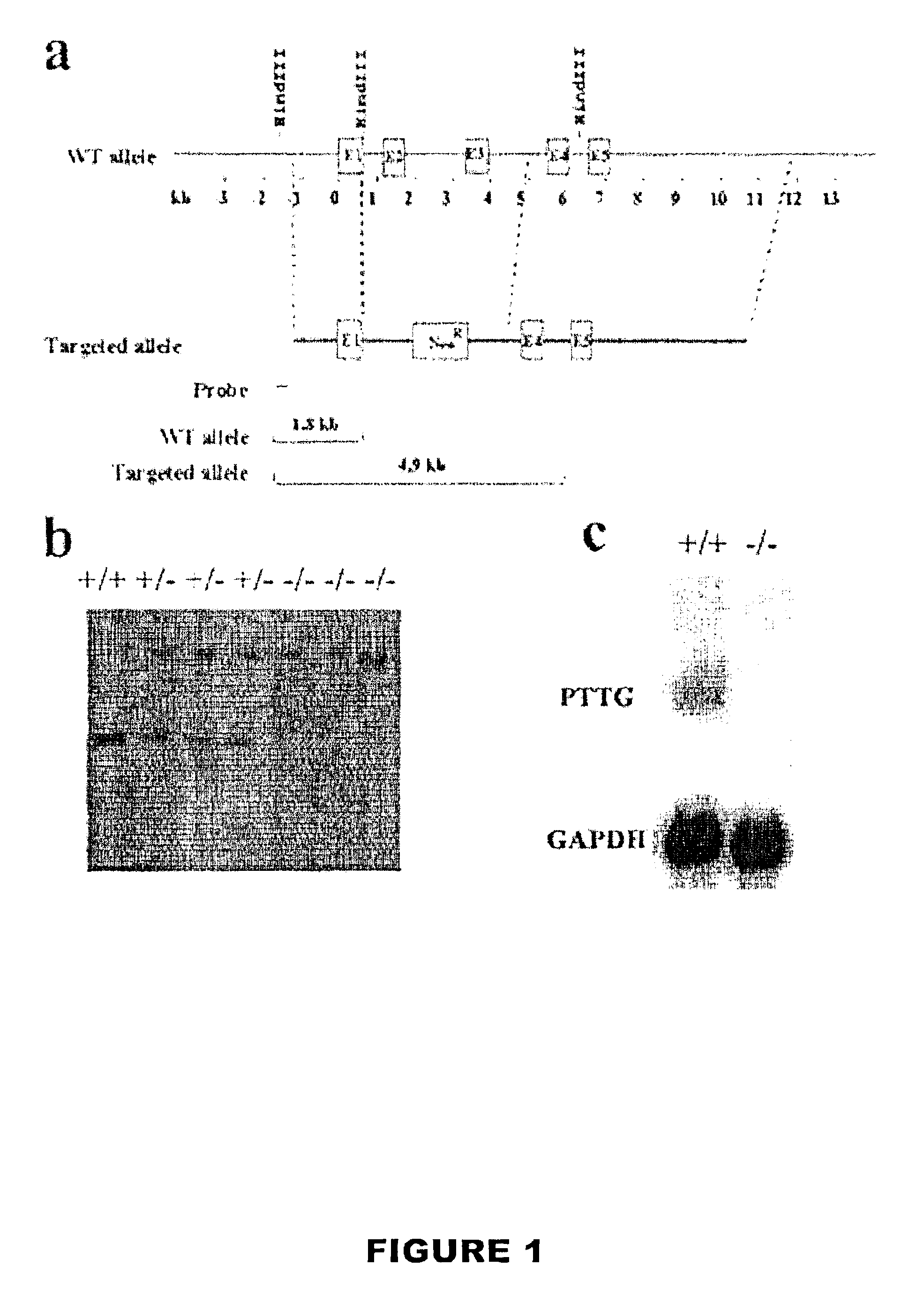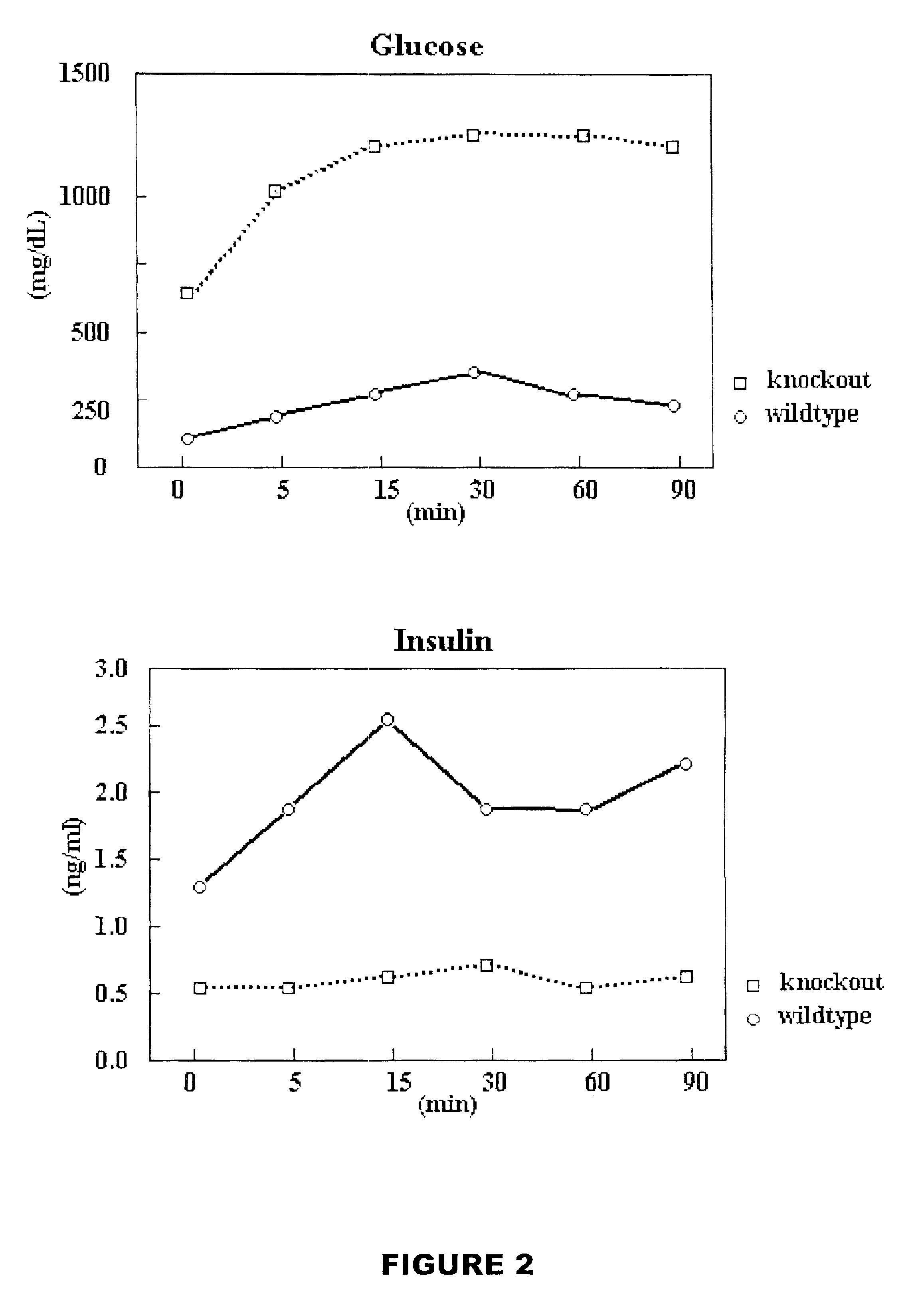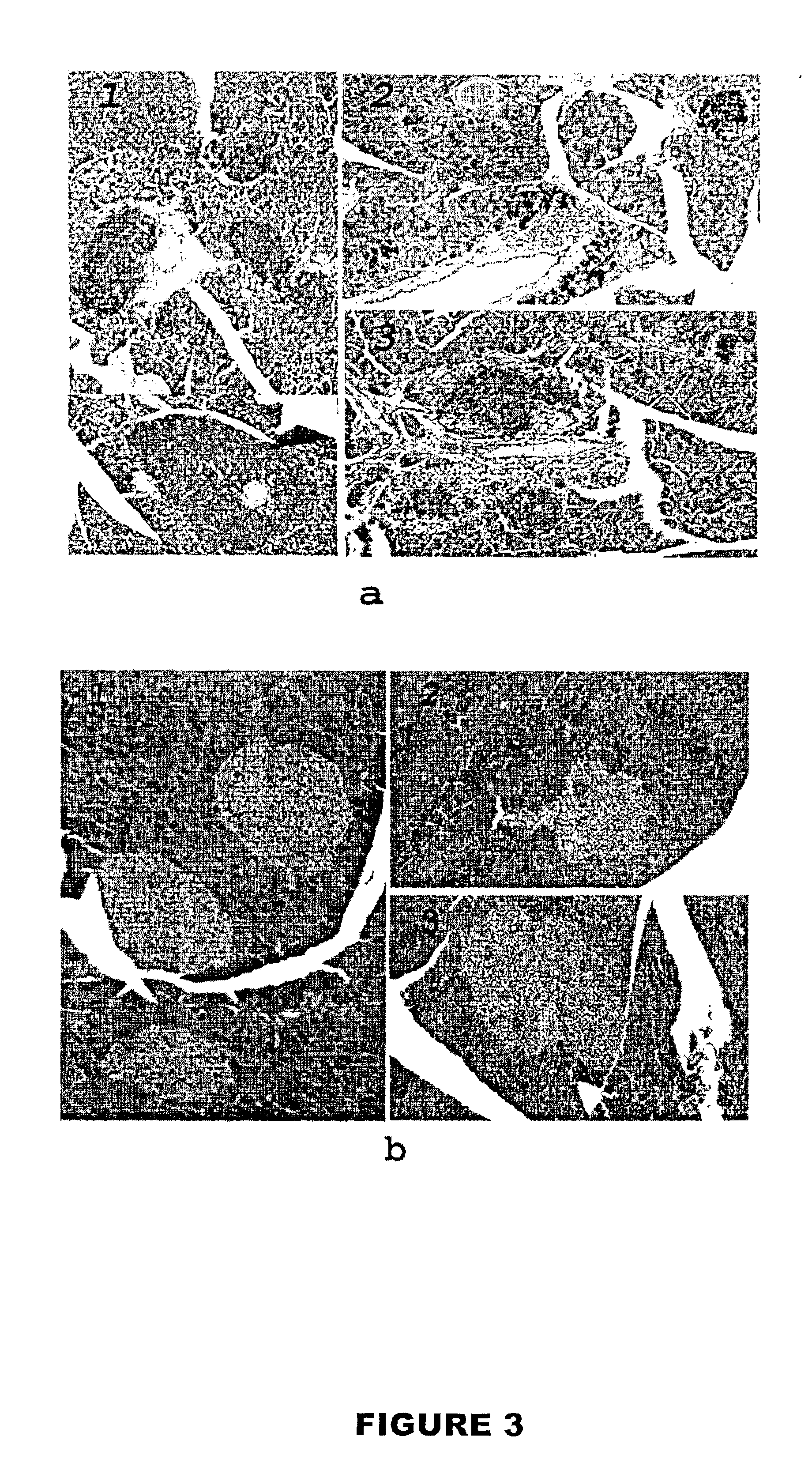PTTG knockout rodent as a model to study mechanisms for various physiological phenomena, including diabetes
a technology of pttg and knockout rodent, applied in the field of biomedical arts, can solve the problems of achieve the effects of more effective screening, polygenic susceptibility to diabetes, and complicated elucidation of underlying mechanisms for diabetes developmen
- Summary
- Abstract
- Description
- Claims
- Application Information
AI Technical Summary
Benefits of technology
Problems solved by technology
Method used
Image
Examples
example 1
Preparation of PTTG Null Rodents
[0082]A 16 kb Not I fragment containing the entire PTTG coding region was isolated from a mouse 129 SvEv λ genomic library (Stratagene) using a PTTG cDNA probe labeled using a commercially available labeling kit. (Wang, Z., et al., Characterization of the murine pituitary tumor transforming gene (PTTG) and its promoter, Endocrinology 141:763-771 [2000]). The targeting vector contained the equivalent of ˜12.5 kb murine PTTG genomic DNA with a 4.2 kb Hind III—EcoR I fragment deletion, including part of the first exon containing the ATG start codon, exons 2 and 3, through the middle of the 3rd intron, replaced with pGK-neo. (FIG. 1A). The targeting vector was then electroporated into E. coli DH5 α and propagated. The recombinant plasmid DNA was then extracted and linearized with Not I, electroporated into J1 ES cells derived from mice with agouti fur, and selected in 0.4 mg / ml G418. DNAs from ES cell clones were digested with Hind III and probed with the...
example 2
Diabetes Study with PTTG Null Mutant Rodents
Blood Glucose Assay:
[0085]Method
[0086]18 male and 15 female PTTG null mice and 10 male and 12 female wild-type control mice were fasted 16-20 hrs before blood was collected and used for glucose assay using DEX glucometer (Bayer) per manufacturer's instructions.
[0087]Results
[0088]Hyperglycemia, hypoinsulinaemia and hypoleptinemia was observed in male PTTG null mice at 2 months old, which became more prominent after 5-6 months. Only 1 out 15 female PTTG null mice showed hyperglycemia at 12 months age. No hyperglycemia or hypoinsulinaemia was observed in the wild-type male or female mice of the control group. At 9 months old, above 80% (11 out of 13 male mice observed) had hyperglycemia (blood glucose level at 800 mg / dL±250 mg / dL in fasted PTTG knockout male mice vs. 70 mg / dL±15 mg / dL in control), hypoinsulinaemia (0.3 ng / ml±0.12 ng / ml in PTTG knockout mice vs. 1.6 ng / ml±0.4 ng / ml in control group), and hypoleptinemia (circulating leptin leve...
example 3
Female Fertility Study with PTTG Null Mutant Rodents
[0102]Method
[0103]To determine what effect, if any, PTTG under-expression can have on mouse litter size, the average litter size was measured from 15 breedings using mice bearing the PTTG − / − genotype.
[0104]Results
[0105]The average litter size of the PTTG − / − matings were less than half that of the litter size from a PTTG + / − or + / + dam, 3-5 versus 7-11 pups / litter, respectively. (Table 2) This indicated that the PTTG − / − mice are viable and fertile, but demonstrate female subfertility.
[0106]Moreover, the fact that matings of + / − mice yields progeny in a ratio of about 1:2:1 ratio of PTTG + / +:+ / −:− / −, as set forth in Example 1, implies that PTTG deficiency did not result in significant mortality during intra-uterine development.
[0107]
TABLE 2Litter Sizes in Breeding PairsM(+ / +)M(+ / −)M(− / −)F(+ / +)8.6 ± 2.1n / a8.1 ± 1.8F(+ / −)n / a7.8 ± 1.67.7 ± 1.6F(− / −)4.2 ± 1.14.2 ± 1.63.8 ± 1.0
[0108]These results were obtained from at least 3 breeding ...
PUM
| Property | Measurement | Unit |
|---|---|---|
| Doubling time | aaaaa | aaaaa |
| Doubling time | aaaaa | aaaaa |
| body weight | aaaaa | aaaaa |
Abstract
Description
Claims
Application Information
 Login to View More
Login to View More - R&D
- Intellectual Property
- Life Sciences
- Materials
- Tech Scout
- Unparalleled Data Quality
- Higher Quality Content
- 60% Fewer Hallucinations
Browse by: Latest US Patents, China's latest patents, Technical Efficacy Thesaurus, Application Domain, Technology Topic, Popular Technical Reports.
© 2025 PatSnap. All rights reserved.Legal|Privacy policy|Modern Slavery Act Transparency Statement|Sitemap|About US| Contact US: help@patsnap.com



